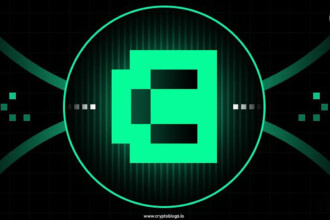The blockchain industry has seen notable growth in recent times as the enthusiasm around cryptocurrency and decentralized finance (DeFi) is surging day by day.
In this run, Ethereum has emerged as one of the most beneficial blockchain networks. Since its launch in 2015, Ethereum has been at the forefront of crypto adoption, thanks to its smart contract capabilities and interoperability with other blockchains.
However, as Ethereum’s popularity and use cases have increased, the platform has started facing multiple challenges that are hindering its widespread adoption. Being open-source and decentralized, Ethereum is continuously evolving through significant technical innovations and developments. Yet, it struggles with fundamental deficiencies. Among these challenges, scalability remains a critical issue.
Blockchain scalability can be described as a feature that extends the capabilities of the blockchain to meet increased network demand. As activity on the blockchain network rises, it begins to face issues such as delayed executions and high transaction costs. These problems lead to network congestion, adversely affecting user experience.
In such cases, a blockchain has to undergo major fundamental changes or may even require a restart. This goes against the inherent values of blockchain technology, which is designed to be continuous and unalterable.
To address these issues, developers have introduced several technical innovations on Ethereum. One of the most significant developments in this context is the implementation of layer 2 networks, known as L2s.
What Are Layer 2 Networks?
Layer 2 networks are blockchain scaling solutions that work on top of core blockchain (Layer 1) networks like Ethereum and Bitcoin to address the issue of scalability. Layer 2 networks (also known as L2s) enable its underlying blockchain with efficient, high-speed, and low-cost transactions in order to increase network performance and capacity.
As described above, major blockchains like Ethereum, Solana, and others are facing scalability issues; layer 2 networks emerge as an ideal solution for this, which offloads the burden of transaction processing and provides native data settlement.
Technically, the layer 2 network processes and verifies transactions off-chain with it, submitting the execution proof to the layer 1 blockchain. Layer 2 verifies and validates information with data available on the Layer 1 blockchain. This process involves extracting a heavy computational load from the primary blockchain by settling the transactions on a different network and sending output back to it.
Think of L2s as a junior employee who goes to help a senior employee with work overload. The junior employee checks, verifies, and submits all the files to the senior employee, who will check the proof before approving it.
Functionality of Layer 2 Networks
Understanding Layer 2 solutions could be uphill task for one, and that’s why we try to put simplest break down of its complexity.
Layer 2 networks are advanced frameworks built on top of a primary blockchain, like Ethereum, to enable faster and more cost-effective transactions. They operate as separate layers where transactions are processed at high speeds, distinct from the slower, more expensive operations on the main blockchain (Layer 1).
Different Layer 2 solutions have their unique methods to achieve this efficiency, but their primary objective is consistent: to accelerate transaction processing.
The core of Layer 2’s functionality lies in two main components.
First, there’s the transaction processing network, where the fast execution of transactions and computations takes place. Second, a vital smart contract on the underlying blockchain serves as a guardian. This contract checks and verifies the transactions occurring on Layer 2, ensuring their legitimacy and resolving any disputes.
It is akin to a referee that validates the integrity of each transaction. For Layer 2 to update the transaction record on the main blockchain, it must provide cryptographic proof, which is a digital testament to the validity of its transactions.
To illustrate these concepts, consider two prominent types of Layer 2 implementations: payment channels and rollups.
Payment channels facilitate numerous off-chain transactions with a final settlement on the main blockchain, effectively bypassing the need to record every individual transaction on Layer 1.
Rollups, on the other hand, bundle multiple transactions into a single one, which is then processed on the main blockchain.
Both methods significantly reduce the load on the primary blockchain, ensuring quicker and cheaper transactions. This dual approach of Layer 2 networks – speedy transaction processing combined with robust validation mechanisms – exemplifies their role in enhancing blockchain efficiency.
Scalability Issue For Ethereum
Ethereum is among the leading blockchain networks that face technical hurdles as its has come up with a dominant decentralized finance (DeFi) ecosystem. A massive rush in network activity has evidently congested Ethereum before.
During the high network activity, Ethereum has seen terrible effects on performance such as skyrocketing gas fees and slower confirmation time. At such time, it was not capable enough to handle huge loads of transactions hence the layer 2 networks were introduced as a viable solution.
Ethereum prioritizes decentralization and security while it sacrifices scalability, as said in Blockchain Trilemma that a blockchain could only focus on two of these three aspects. This drawback has become a major subject for Ethereum scaling.
Types of Layer 2 Networks
Layer 2 networks can be classified based on the tools and tech stack they use for transaction processing. The most used tech stack in L2 development is rollups and the late zero-knowledge (zk) proofs. Below are the different types of layer 2 networks;
1. Sidechain
A Sidechain is a separate layer 2 blockchain network that runs in parallel to a primary blockchain like Ethereum. Sidechains have its own consensus for transaction processing and it later submit data to the Ethereum Virtual Machine (EVM) via a two-way bridge.
These L2s essentially work as an alternative blockchain to the primary blockchain networks. Polygon (PoS) and Gnosis are prime examples of a sidechain for Ethereum.
2. Rollups
Rollups are another popular method for scaling Ethereum which works on off-chain data settlement principal unlike Sidechains which utlizes onchain method.
Rollups bundle transactions in a batch and provides its compressed data to the main blockchain in a single transaction calldata. Rollups do not have its own consensus as it inherits security from the primary blockchain network.
Abitrum, Optimism, zkSync, Loopering etc. are the examples of Ethereum rollups. This method is the most popular approach for Ethereum scaling. Rollups also can be sub-catogarized as Optimistic Rollups and Zero Knowledge (zk) Rollups.
3. Plasma
Plasma can be defined as a blockchain that runs its own consensus while processing transactions off-chain for Ethereum. It is referred to as “child chains” as they are essentially copies Ethereum.
Plasma seemingly combines mechanisms of both Sidechains and rollups which has its own block production method while verifying transactions using optimistic rollups.
4. Channels
As a Ethereum scaling applications, Channels or State Channels enables a group of participants to perform a sequence of off-chain arbitrary transactions with it only submitting two transactions to main chain, one for opening the state and another for closing. This enables extremely high throughout in lowest cost.
Although due to its limited applicabiloity, Channels can not be used at large scale but it has significant uses in peer-to-peer payment contracts.
Layer 2 Networks For Decentralized Finance (DeFi)
In the landscape of decentralized finance (DeFi), which is undeniably dominated by Ethereum, the layer 2 networks play a vital role in making the ecosystem lighter, faster, and more efficient. Several DeFi protocols that are deployed on layer 2 networks have performed with more efficiency than Ethereum-native protocols.
For instance, where a simple ERC-20 token swap could cost nearly $27 as per data from Etherscan, it could be done in almost half a cent on Polygon or any other layer 2 networks. The transaction speed will also be significantly increased in doing such transactions.
Decentralized finance space also tends to favor faster executions at a minimal cost, so the layer 2 networks make themselves a perfect fit for this industry. Moreover, the simultaneous executions between Ethereum and its layer 2 networks also contribute to enriching the DeFi ecosystem.
Popular Layer 2 Networks on Ethereum
Currently, there are a number of layer 2 networks launched on Ethereum, Bitcoin, and other primary blockchains that lack scalability.
1. Polygon PoS – A leading Ethereum scaling solution which is a sidechain running in parallel to the Ethereum manner. It is one of the earliest Ethereum scaling projects that is front-running the evolution of the layer 2 ecosystem.
2. Arbitrum – Arbitrum is a layer 2 blockchain solution that uses Rollup technology to scale Ethereum. It bundles multiple off-chain transactions in batches and submits to the mainnet in a single transaction call data.
3. Optimism – Another popular Ethereum scaling solution. Similar to Arbitrum, Optimism also uses the Rollup tech stack (Optimistic Rollups), but it focuses on direct executions without verifying all transactions while assuming that all data is correct until proven wrong.
Conclusion
The blockchain space continues to offer vast opportunities for improvement and innovation. Currently, the sector faces significant challenges, particularly in terms of scalability and security. These issues are critical as they impact the overall functionality and reliability of blockchain networks.
Layer 2 developments, however, are emerging as a revolutionary force in the decentralized finance (DeFi) space. They are specifically designed to enable developers to operate networks smoothly, effectively addressing the issue of congestion. This innovation is crucial for maintaining the efficiency and continuous growth of blockchain technology.
FAQs
Q1. What is Layer 2 in DeFi?
Ans: Layer 2 is a off-chain blockchain network that is deployed on top of other blockchains to address the issues of scalability.
Q2. What is the Importance of Layer 2?
Ans: Layer 2 networks enable blockchains like Ethereum to achieve scalability. While blockchain faces challenges such as high transaction fees and lower speed, Layer 2 allows Ethereum transactions to be executed with a significantly lower cost and high speed.
Q3. What is the main purpose of Layer 2 scaling in Ethereum?
Ans: Ethereum faces scalability problems at core infrastructure which is resolved by layer 2 scaling solutions. Some of the layer 2 networks focus on reducing transaction fees while other addresses the issue of slower transaction execution.
Q4. Can Bitcoin have a Layer 2?
Ans: Yes, Bitcoin can have layer 2 networks. In fact, Bitcoin already has several layer 2 networks including Lighting Network which aims to foster BTC payments by improving transaction speed.
Q5. How many Layer 2 blockchains are there?
Ans: There are numerous blockchain networks including Polygon, Arbitrum, Optimism, etc.
Q6. Is Solana an L1 or L2?
Ans: Solana is an L1, or Layer 1, blockchain that offers users fast speeds and affordable costs. It supports smart contracts and facilitates the creation of dApps.







